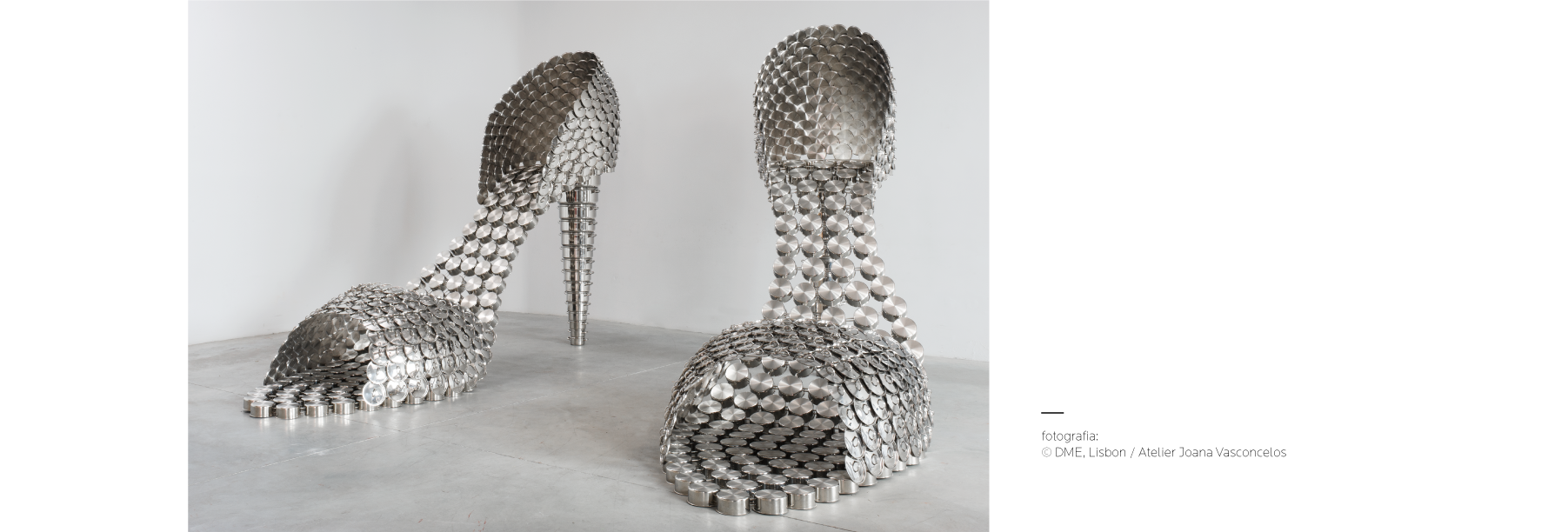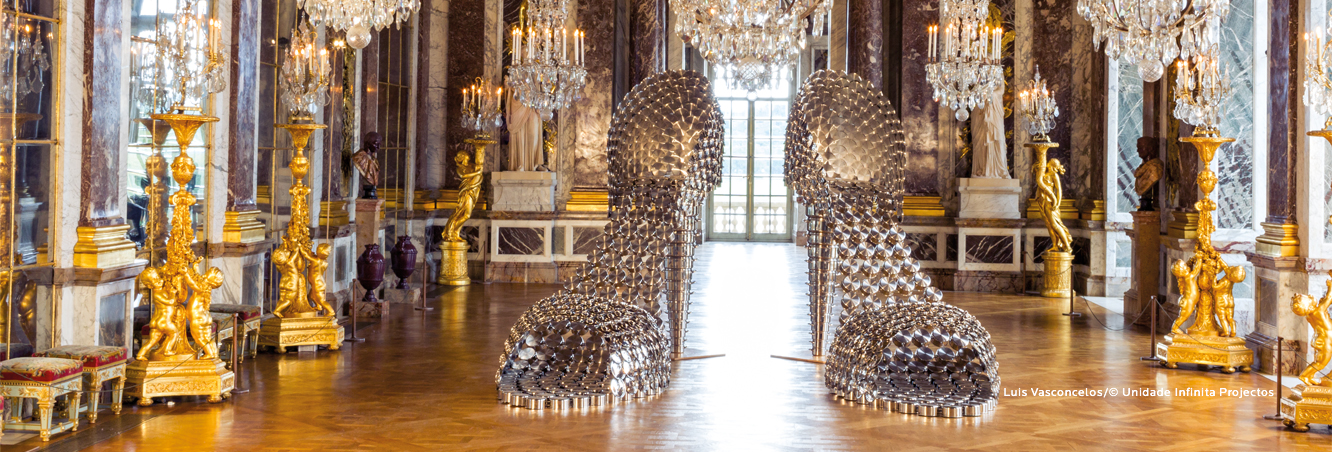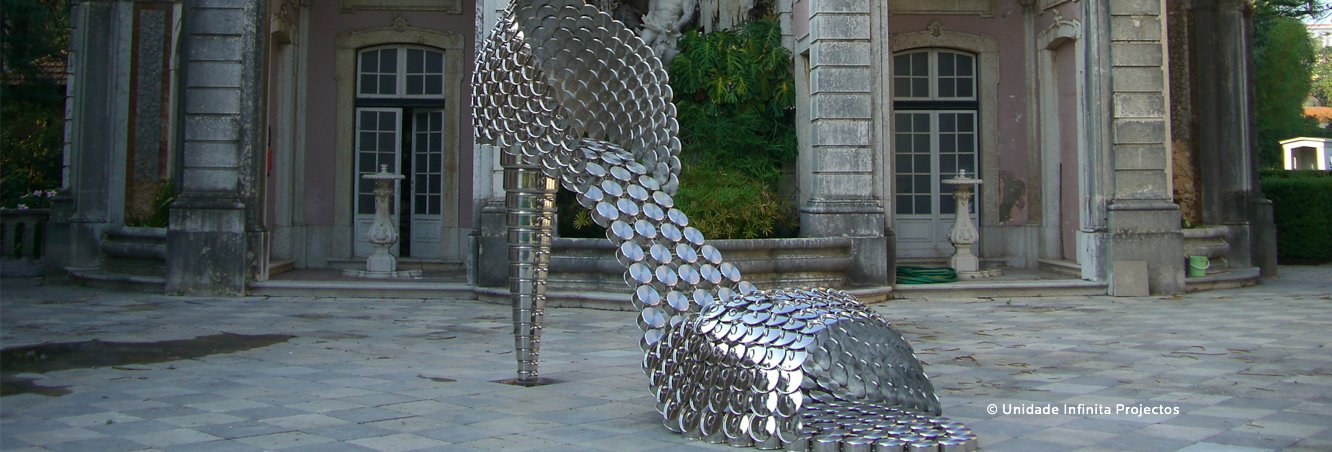Art
 Joana Vasconcelos - Miguel Domingos / © Infinita Projects. PLASTIC ARTIST - JOANA VASCONCELOS What meaning do you intend to accomplish in your own works by using artefacts that relate to traditional Por-tuguese art? Like other aspects of my subjectivity, the fact of being Portuguese influences how I relate to the world. However, this particularity is only a point of departure to articulate universal issues, because what interests me is the dialog between traditions and experiences, between what is Portuguese and what is made around the world and this juxtaposition of local and global references. In the end, what is really important is to communicate across borders. What is the iconic value of the shoe made with Silampos’ casseroles? The shoes’ series made with Silampos’s casseroles has a great symbolic significance, starting from the titles of these works, which refer to iconic female characters (Marilyn, Cinderella, etc.), and from the unlikely association between casseroles and high-heeled shoes, contrasting the roles of Women in society, regardless of their origin: the social performance and the domestic context. The wide recognition of the Silampos brand also serves to bring the public more closely to the work. As a consumer, what do you like the most about the Si¬lampos brand? Both as a normal domestic user and as an artist, I admire the way that the brand has made itself part of the collective memory of the Portuguese people, and more than a brand, has become a synonym of its own products in Portugal. In 2007, Silampos began providing the contemporary artist Joana Vasconcelos the pans that gave life to a series of approximately 3 meter high shoes. Vasconcelos is the first Portuguese artist to exhibit at the Palace of Versailles in Paris. In this exhibition, which was inaugurated on the 19th of September 2012, the artist decided to "start a dialogue between the history and the aesthetics of the place, crossing them with traditional Portuguese techniques, a tribute to the women who lived there and changed the course of history”  |

![alt:[2020]](/temas/institucional/img/2020.png)




